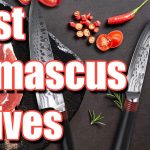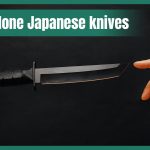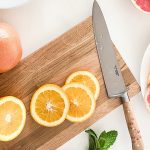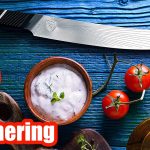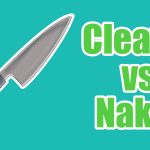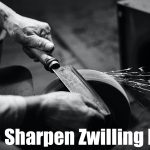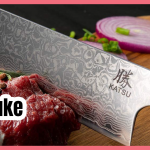Knives are a chef’s most basic and essential tool. Without a knife, you can’t cook. In order to keep your knives in top form, they need to be sharpened regularly. There are many methods of sharpening knives – some more traditional than others – but one of the simplest ways is with a steel rod or butcher’s steel. For those who don’t know how to sharpen knives without stones, this blog post will walk you through it step-by-step so that you never have dull blades again!
How to Sharpen a Knife Without a Stone
Table of Contents
A sharp knife is a chef’s best friend. The sharper the blade, the less effort and time it takes to cut through food. A dull knife requires more force to make clean cuts and can lead to injury or accidents in the kitchen. Luckily, there are many ways to sharpen knives without expensive stones.
Top Methods to Sharpen a Knife without a Stone 2022
Throughout history, there have been many different types of tools used for cutting and slicing. Today, the most common tool used is probably a knife. But knives can become dull with time and use. The good news is that it’s possible to sharpen a knife without using an expensive whetstone or electric sharpener.
Heel of Knife
The first thing you need is a surface to rest the heel of the knife on while you sharpen it. The surface should be either made from stone or ceramic material, as these materials are less abrasive than other surfaces such as wood or concrete.
Sharpen with Cardboard
It’s also possible to simply place cardboard inside of a desk and use that as your sharpening surface. If you choose to do this, then make sure that the cardboard is taped down so that it doesn’t shift around while you are trying to sharpen the knife.
Sharpening with Sandpaper
The next thing you need is some material to use as an abrasive. The most common abrasive for sharpening knives is a medium-grit sharpening stone or medium-grit sandpaper. These materials are great for removing material fast and also for restoring a worn-down or damaged edge on a knife.
Blade Angle
When sharpening the knife, you should hold the blade at approximately 5 degrees off of level to ensure that it’s being ground evenly on both sides of the edge. To help get an idea where 5 degrees is, imagine that the side of the knife looks like a clock. The sharpening angle should be approximately halfway between straight down and 12 o’clock on your imaginary clock face.
Sharpening with Grit Abraisive
After you’ve gone over the edge of the knife with medium-grit abrasive, you can use fine-grit to remove any minor scratches or build up from using medium-grit abrasive. In most cases, one pass with fine-grit will do the trick.
In some cases it may be necessary to use more than one pass of fine-grit sandpaper or a finer grit sharpening stone. If you feel that multiple passes are needed, then go slowly as to not overheat the metal and cause it to lose its temper.
Testing
Once you’re done sharpening, be sure to wipe off any excess material from the knife and clean it thoroughly with water before storing it. It’s always a good idea to test your knife on a piece of fruit or another food item before using it for its intended purpose to ensure that it’s working properly and remains sharp.
Cardboard Surface
If you’re using a cardboard surface, be sure to use at least two layers of cardboard and tape down each layer with masking tape because the surface will get extremely hot while you’re grinding. This is due to friction created between the edge of the knife and the abrasive.
Stone or Ceramic
If you’re using stone or ceramic, then the surface should remain cool to hot at most unless you make multiple passes on one side of the knife. Also remember that it will take some time for the surface material to heat up.
Sharpening with Leather Belt
It’s also possible to use something like a leather belt or even some sandpaper wrapped around your hand to restore the edge of your knife, but this is much more dangerous than using an abrasive because it’s easy to cut yourself.
It’s also possible to damage the blade by grinding away too much material if you’re not careful, so be sure to take it slowly and consider purchasing a professional sharpening tool just in case you aren’t able to restore your knife’s edge.
You can find professional sharpening tools in most hardware stores, but make sure that you choose one with the right type of abrasive-grit for restoring the knife’s edge. Be aware that electric sharpeners will remove a lot more material than stone or ceramic, which makes them unsuitable for knife restoration.
Before you do anything with your knife, be sure that it’s completely cooled down to avoid overheating the metal and causing it to become soft. Also make sure that the blade is free of dirt or debris before you begin sharpening because it can damage the process by scratching the surface of your knife.
The first thing that you must do is use medium-grit abrasive to remove some of the edge material. If you’re using a cardboard surface , then it’s important that you first tape down two layers of cardboard together with masking tape because they generate a lot of heat from the friction created between the knife and the abrasive.
Conclusion
A sharp knife can make all the difference between a perfect cut of meat, and one that is not quite right. But how do you sharpen your knives if they are dull? You don’t need to purchase expensive stones or gadgets when there are plenty of ways to get them razor-sharp without breaking the bank. Here are three simple methods for getting more life out of your favorite kitchen tool.

Hi, This is Sophia Ava, author of many books about Knives that uses many chefs in their shows, received my MFA in Creative Writing from Mills College is a famous Chef. Born in Oakland, California.As a expert chef i have written blogs and knives reviews that i tested by my own with the partnership of famous brands for their famous knives. With my well researched artilces and reviews about knives you can make your kitchen life easier.

